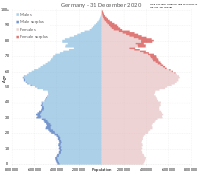
Photo from wikipedia
AIM The aim of this study was to investigate high-risk human papillomavirus (hrHPV) prevalence according to socioeconomic and demographic characteristics in a Danish screening population. METHODS We used data from… Click to show full abstract
AIM The aim of this study was to investigate high-risk human papillomavirus (hrHPV) prevalence according to socioeconomic and demographic characteristics in a Danish screening population. METHODS We used data from HPV SCREEN DENMARK, which was an implementation study embedded into the routine cervical cancer screening programme. During 2017-2020, women aged 30-59 years screened in the Region of Southern Denmark were offered HPV testing or cytology. In the HPV group, liquid-based cytology samples were tested for 14 hrHPV types. We obtained registry information on socioeconomic and demographic characteristics and used log-binomial regression to estimate the prevalence ratio (PR) of hrHPV in three age groups (30-39, 40-49, 50-59 years), adjusting for age and marital status. RESULTS We included 31,124 HPV unvaccinated women. In all age groups, the age-adjusted hrHPV prevalence was higher in women with basic versus higher education (e.g. age 30-39: 11.9% vs. 9.5%; PRage-adjusted=1.24; 95% confidence interval (CI): 1.02-1.50); women who were unemployed vs. employed (e.g. age 30-39: 11.6% vs. 10.4%; PRage-adjusted=1.11; 95% CI: 0.95-1.28); and in women with highest vs. lowest income (e.g. age 30-39: 11.6% vs. 9.5%, PRage-adjusted=1.18, 95% CI: 0.98-1.44). In models adjusted for marital status, these associations largely disappeared. CONCLUSIONS We found slightly higher hrHPV prevalences in women with basic education, low income and unemployment. The differences largely disappeared when taking into account marital status as a potential proxy for sexual behaviour. Our findings support a need for targeted information on safe sexual practices and promoting socioeconomic equality in HPV vaccination and cervical cancer screening participation.
Journal Title: Scandinavian journal of public health
Year Published: 2023
Link to full text (if available)
Share on Social Media: Sign Up to like & get
recommendations!